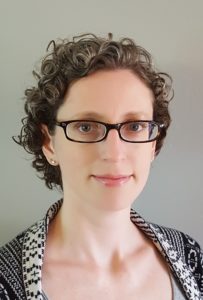
Coffee in hand, I sit at my work desk every morning to sift through emails from across the world: a lab project completed in Israel, editors’ instructions from Kentucky, reviewer inquiries out of Sweden. If I’m careless, some of the dark, liquid caffeine drops on my clothing. It’s no matter. Instead of formal business attire, I’m relaxing at home in a pair of jeans.
A work-at-home editorial assistant may not be the most noteworthy occupation, but the position didn’t simply fall in my lap. I worked hard to get here and will continue to work hard to help, even in some small measure.
I attended the Pennsylvania State University during a time when the waning newspaper industry made me think twice about pursuing journalism. Instead, I majored in English with a minor in history. Some might consider it a soft, liberal arts education. However, I recognized that mastering the intricacies of language and communication, as well as placing value on historical knowledge, advances society. This decision to focus on liberal arts also greatly benefited me as it kept many doors open for future endeavors.
After graduation, I relocated to Baltimore, where I accepted a position as an executive assistant for a business that specialized in helping other small- and medium-sized companies grow. I’d answer calls and schedule appointments for lawyers, accept mail on behalf of therapists, and greet the clients of a multitude of businesses in a professional downtown location. It felt like a great risk at the time, but after a few years I left my first post-college job to gain additional experience in temporary positions. What started as simple data entry further affirmed for me the importance of consistency in training and documentation, whether the company specialized in medical equipment or engineering. During this time, I also engaged in online writing opportunities to achieve balance with a creative outlet. I reviewed films, composed how-to articles, and wrote about events and popular places within the Baltimore-D.C. area
While searching for a permanent position, I interviewed at the Castle, a gorgeous, early nineteenth century police station in the Hampden neighborhood that had been renovated and turned into various offices and shops. I walked in, obviously overdressed in formal business attire, complete with hosiery and heels. Yet the small, close-knit staff enjoyed my somewhat quirky humor. Circulation Research was clearly the place for me.
The global communications at Circulation Research never ceases to amaze me. In a day, the staff connect with people in Australia, Japan, Hong Kong, India, Berlin, London, Canada, and beyond. And all share the goal of understanding, preventing, and curing heart diseases. By assisting these individuals, I could help with this noble goal.
The position began with processing manuscript submissions and sending out decision letters. Many of the papers addressed induced pluripotent stem cells or cardiac hypertrophy or other important, scientific topics. I felt like a child tasked with interpreting Shakespeare. On occasion, I’d inquire about the latest hot topic and my manager would patiently explain the exciting study and how it impacted what was known about heart disease. I’ll never forget one of the first papers published after I was hired, which discussed how the stem cells of a mouse fetus aided in repairing the heart of its mother under cardiac stress. This was certainly cutting edge science.
When the job responsibilities grew to tackling side projects, I knew I was finally making a difference. I helped test a new web platform, and suggested changes to preserve a user-friendly site. Through WordPress, I updated an image gallery of newly published review articles to increase web exposure. I tracked responses to special articles and invited members to the editorial board.
I am grateful to have made enough of an impression over the years that, when my husband had to permanently relocate to northeastern Pennsylvania for work, I was given the opportunity to take my own work along. Gone was the grueling rush-hour commute, but also the face-to-face interaction with coworkers. Flexible hours replaced the 9-to-5 life. Like many others who work from home, I keep to a schedule. I log on by 8 in the morning and take a brisk walk on my break. To avoid becoming a hermit, I joined a local writers group, where my creativity found a consistent and supportive outlet.
My work responsibilities increased. Most recently, I conducted interviews and wrote profiles for the “Trainees in the Spotlight” series. It was important for me to communicate with the trainees throughout the editorial process, to request head shots and references, and to maintain accuracy of all published information; it’s a personal pet peeve to find errors in a published piece I’ve written.
If I had been told during my interview at the Castle that I’d eventually work from home and become an a contributor to Circulation Research, I would probably have laughed and shaken my head. Yet it paid off to take calculated risks by pursuing my strengths and venturing down the road not taken to find balance in life. While enjoying the benefits of a home office, I look forward to embarking on my first work trip to the American Heart Association’s headquarters in Dallas next year. As one who was raised to always have a thirst for learning and sharpening my skills, I hope to one day go back to school or take a few classes. Moreover, I want to help, even in some small measure, leave the world a better place.
Pam Goldberg Smith is an Editorial Assistant for Circulation Research, an American Heart Association journal.
